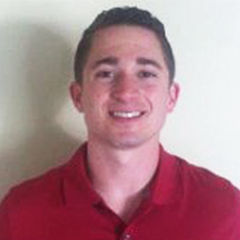Youth training is more popular than ever. This may be attributed, in part, to the fact that over the past three decades, childhood obesity has significantly increased, predisposing many children to health problems and chronic disease (Xu et al., 2016; Copeland et al., 2013; Springer et al., 2013). This has raised awareness regarding exercise in this population, as training is one of the most effective treatments to prevent obesity and disease and improve health- and performance-related variables (Faigenbaum et al., 2009).
Youth training, however, should go beyond the traditional approach of impacting the psychomotor domain. Health and exercise professionals training this population should consider strategies that aid in developing the three domains of learning: cognitive, affective and psychomotor (Hoque, 2016). Although the psychomotor domain is of the greatest importance in our field, the other two domains should not be neglected. Enhancement of all three domains allows for individuals to improve self-efficacy, while gaining the knowledge, skills and attitudes to develop the whole person and encourage future participation in exercise.
To enhance the psychomotor domain through youth training, consider teaching the basic foundational movements. In addition, the participants must be emotionally mature, so that instructions can be followed and comprehended. Specifically, in this population, proper body mechanics are of the greatest importance. Youth training should have a goal of teaching each client how to properly perform the following: walk, run, accelerate, decelerate, jump, land, push, pull, hinge, squat, rotate and prevention of rotation (e.g., anti-rotation). Once an individual becomes competent and learns the foundational movements, complex exercises can be taught and incorporated into the program.
To positively impact the psychomotor domain, however, the other two domains need to be considered as well. Engaging in exercise has shown to positively impact the cognitive and affective domains (Bidzan-Bluma et al., 2018). This will allow for the creation of the most enjoyable training experience, while demonstrating an appreciation for the uniqueness of the youth.
Through proper programming and coaching instruction, you can also positively impact and develop the other two domains. While the cognitive domain focuses on the mental and thinking processes, the affective domain focuses on emotions, attitudes and feelings (Hoque, 2016). Once knowledge and comprehension of basic foundational movements are accomplished, you can allow for application, analysis, synthesis and evaluation to be utilized (Hoque, 2016). Challenging youth by having each individual analyze and evaluate the movements learned throughout the session will enhance the cognitive domain. For example, youth clients can be asked what the purpose of each exercise is, while identifying the important components of each movement. The ability of children to understand why they are doing a movement or activity may have a positive impact on future training participation.
Next, you can continue to positively impact the cognitive domain, while simultaneously influencing the affective domain. One of the easiest and most effective ways to develop the affective domain is to place children into groups, while emphasizing respect, responsibility, enthusiasm and teamwork, just as in team sport. One strategy to consider and emphasize while training this population is to allow for individual leadership, responsibility and choice. For example, allowing youth clients to lead the warm-up and have a choice regarding certain exercises may positively impact participation and effort, while influencing self-responsibility. Another strategy is to have each individual teach, encourage, analyze and evaluate other youth participants. For example, youth clients could encourage each other through praise and gestures, or they might analyze their training partner’s squatting form—these actions will positively impact all domains. To hear another child say, “Great work!” to his or her training partner could have a greater positive impact on self-efficacy and confidence than if the child consistently only hears praise and encouragement from other adults. The development of cognitive and affective domains will aid in the enhancement of the psychomotor domain, while providing a climate and experience that is enjoyable. This allows each client to value one another, improve self-efficacy as it relates to human movement, and build relationships and habits that go beyond the weight room.
Want to learn how to develop and lead age and skill-level appropriate fitness programs? Become an ACE Youth Fitness Specialist and enhance your client offerings.
References
Bidzan-Bluma, I. and Lipowska, M. (2018). Physical activity and cognitive functioning of children: A systematic review. International Journal of Environmental Research and Public Health, 15, 800, 113.
Copeland, K.C. et al. (2013). Management of newly diagnosed type 2 diabetes mellitus (T2DM) in children and adolescents. Pediatrics, 131, 2, 364382.
Faigenbaum, A.D. et al. (2009). Youth resistance training: Updated position statement paper from the National Strength and Conditioning Association. The Journal of Strength and Conditioning Research, 23, 5, S60S79.
Hoque, M.E. (2016). Three domains of learning: Cognitive, affective and psychomotor. The Journal of EFL Education and Research, 2, 2, 4552.
Springer, S.C. (2013). Management of type 2 diabetes mellitus in children and adolescents. Pediatrics, 113, 2, 648664.
Xu, S. and Xue, Y. (2016). Pediatric obesity: Causes, symptoms, prevention and treatment. Experimental and Therapeutic Medicine, 11, 1, 1520.




 by
by 





